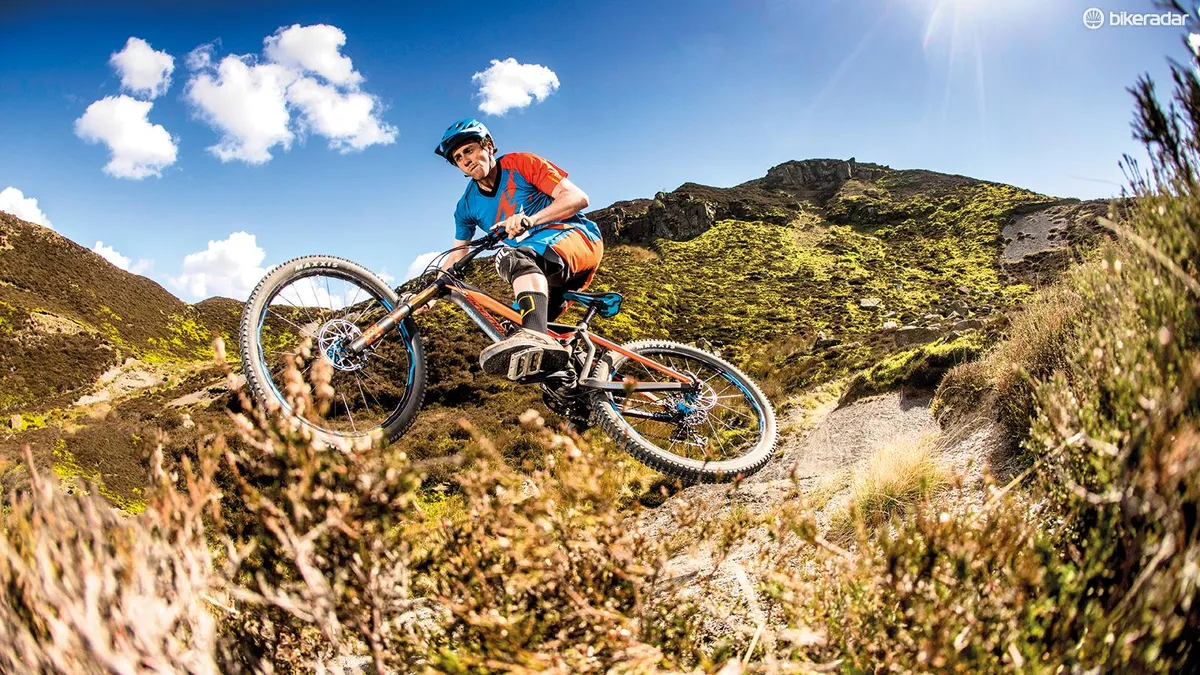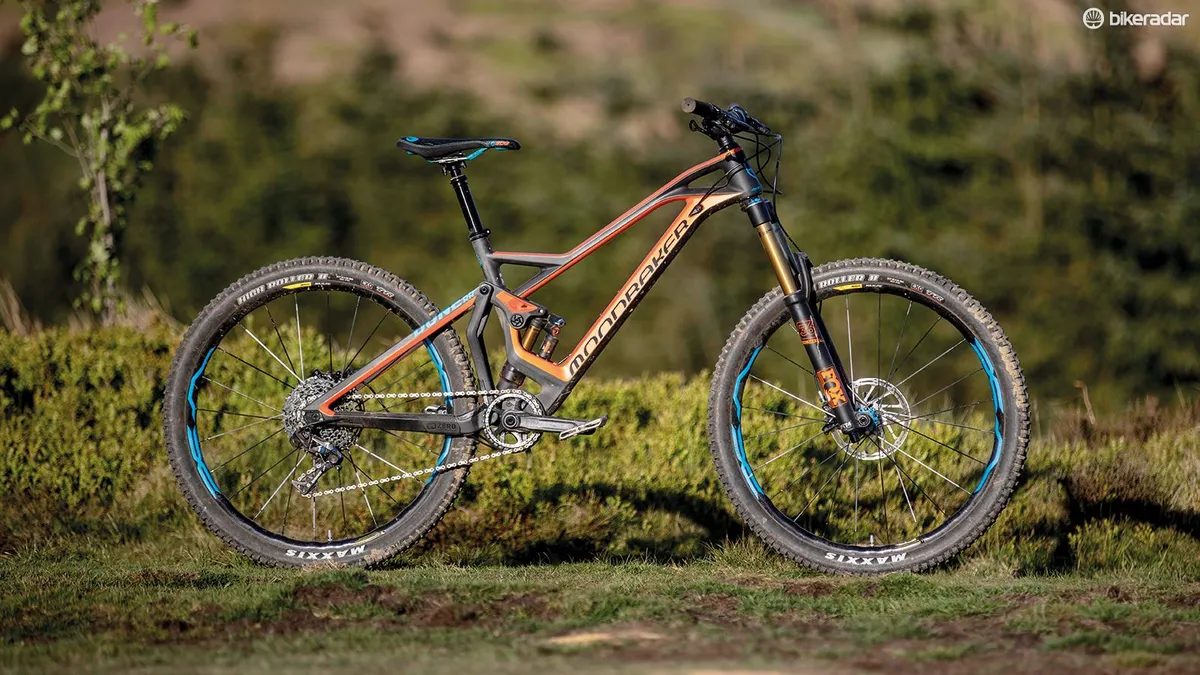Every time you read about a bike being better because it’s longer, you can thank Mondraker for literally sticking its neck out. The handling of the Dune RR still benefits from Mondraker's pioneering ‘Forward Geometry’, with a super-long 470mm reach on my medium sample, matched to a stubby 30mm stem and 780mm bar.
Add a relatively steep 66.5-degree head angle and you’ve got an intoxicating mix of massive baseline stability but immediate front wheel reactions and precision that keeps the Dune feeling viscerally dynamic.
Because the 75-degree seat angle puts plenty of weight forward, the Dune tracks well under power on tight singletrack and technical climbs, and it skims over stutter bumps.

The super-short lower link of the ‘Stealth’ suspension creates a tight pedalling feel, which makes the low overall weight easy to accelerate. But once pointed downhill, I never got the Mondraker smooth and settled enough to make the most of the geometry, despite spending more time tuning it than any other bike in the Superbike category of Bike of the Year.
Even with a minimal compression tune on the shock, the need for four volume spacers to keep it progressive meant the back end spiked badly even through relatively tame rock gardens and repeatedly failed to track lines that the front hooked up with ease.
The non-Boost rear end limits space for bigger rubber and it ultimately feels more like a 140mm trail bike than a 160mm enduro machine, at which point the Mondraker Foxy Carbon XR seems a much better bet for £400 more. Especially as it offers better kit, including a 12-speed rather than 11-speed gearset and DT Swiss EX 1501 Boost wheels instead of skinny, harsh and yet flexy Mavic XA Elites.

